Historic Places in State Parks
History abounds in Pennsylvania. But it’s not limited to Philadelphia or Gettysburg. Discover Pennsylvania’s history at numerous museums and sites across the commonwealth including Pennsylvania state parks and forests.
View an iron furnace or observe an operating grist mill. Attend an interpretive program to get a personal touch that brings history to life.
Pennsylvania State Parks offer numerous programs about Pennsylvania’s history. Whether it's stories about westward expansion or industry’s impact on our natural resources, every park has a history and we like to share it.
Below are examples of some of the our most popular historical programs. Visit the
DCNR calendar of events to discover other opportunities to learn about Pennsylvania’s history within your state park and forests.
Select ;a region on the map or zoom in on the map using the zoom tool on the left. Selecting a park in the map will reveal an information box with a listing of amenities in the park, and a link to the park in the listing far below.
Northern Pennsylvania Historic Places
Kinzua Viaduct
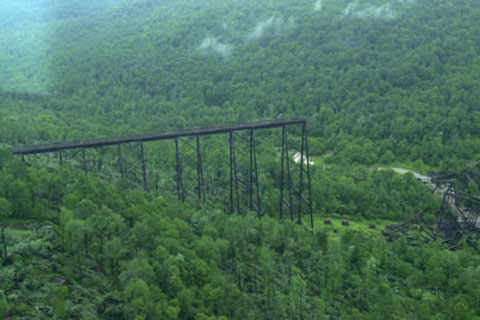
The Kinzua Viaduct is a National Engineering Landmark and on the National Register of Historic Places. When this viaduct was built in 1881, it was the world's highest and longest railroad bridge at 301 feet tall and 2053 feet long.
A tornado struck the side of the Kinzua Viaduct in 2003 taking down elven towers from the center of the bridge. Visitors can still view the remains at the bottom from the six restored, original towers, pedestrian walk way.
CCC Museum and Buildings
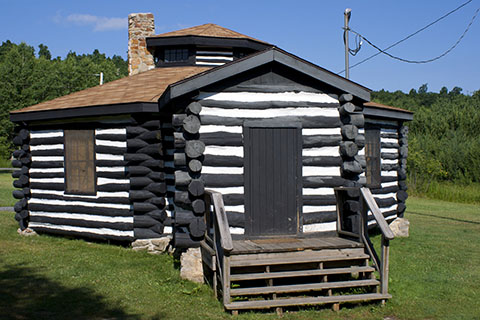
Parker Dam is full of CCC-era buildings. The park has three sites on the National Register of Historic Places and a Civilian Conservation Corps Interpretive Center. The visitor center explores the parks logging history.
Southern Pennsylvania Historic Places
President's Birthplace Monument
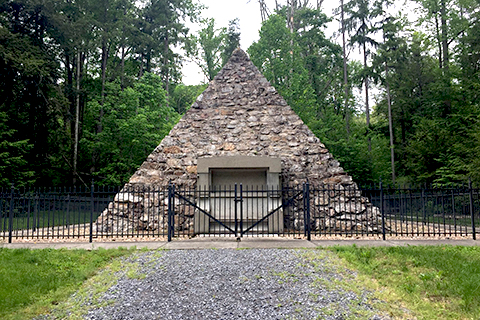
Dedicated in honor to the 15th president of the United States, this narrow, peaceful hollow is the site of James Buchanan’s birthplace. A stone pyramid monument surrounded by majestic conifers stands on the site of the original cabin where he was born.
Iron Furnace
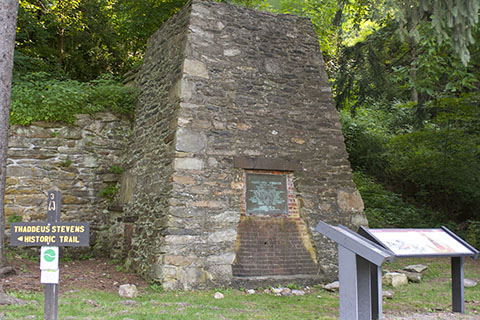
The site of an iron furnace once owned by Thaddeus Stevens has a reproduction of the furnace and charcoal hearths that were burnt during the Battle of Gettysburg, while serving as a camp location for Union forces.
Quicklime Kilns
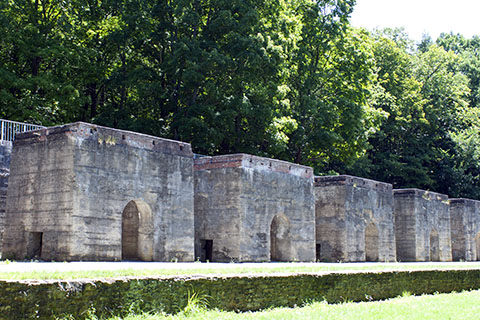
The Blair Limestone Company Kiln remnants are the focus of historical and interpretive programs and displays. These large, gray furnaces were used to create quicklime form limestone. The Blair Limestone Company was a subsidiary of Jones and Laughlin Steel Company of Pittsburgh, Pennsylvania.
Charcoal Iron-Making Village
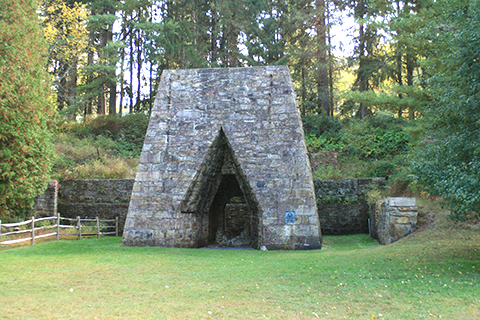
Walking through historic Greenwood Furnace creates images of the community that flourished here from 1834 to 1904. Greenwood Furnace was a busy industrial complex, with all the noise and dirt of a 19th century ironmaking community.
The Greenwood Furnace National Historic District features many buildings from the town and a costumed interpreter.
Grist Mill, Farmhouse, Train Car, and Covered Bridge
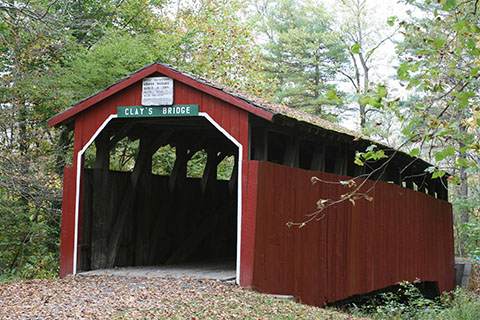
The Little Buffalo Historic District has a covered bridge; a restored, operating grist mill; an old farm house built on the site of a colonial tavern; and a narrow-gauge railroad trace which features one of the original railroad cars.
Charcoal Iron-Making Village
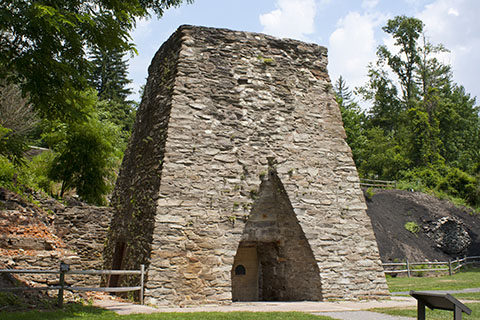
This park was once the site of the Pine Grove Furnace Iron Works that dates from 1764. Historical buildings include the ironmaster's mansion, a gristmill, an inn, and several residences.
A self-guiding historical trail leads you through the remains of the iron works. The Appalachian Trail passes through the park.
Charcoal Iron-Making and Civilian Conservation Corps Buildings
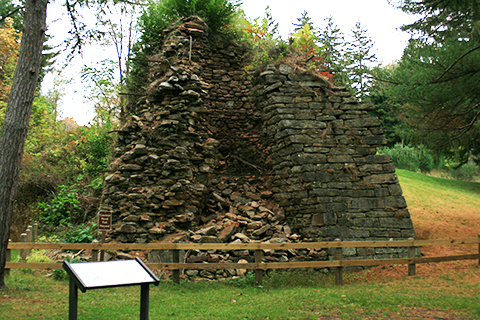
A wayside exhibit interprets the ruins of a charcoal iron furnace. Several buildings from the Civilian Conservation Corps camp are by the furnace ruins.
Eastern Pennsylvania Historic Places
Delaware Canal
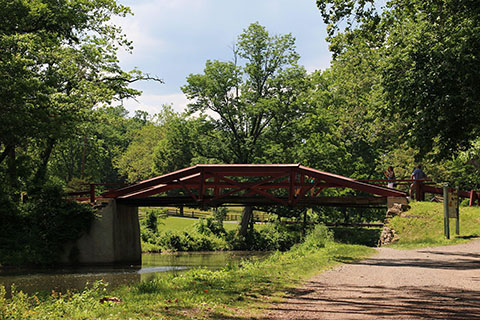
The 60-mile Delaware Canal is the only remaining continuously intact canal of the great towpath canal building era of the early and mid-19th century.
The canal remains today with almost all its features as they existed during its century of commercial operation. The canal is a National Historic Landmark.
CCC Buildings
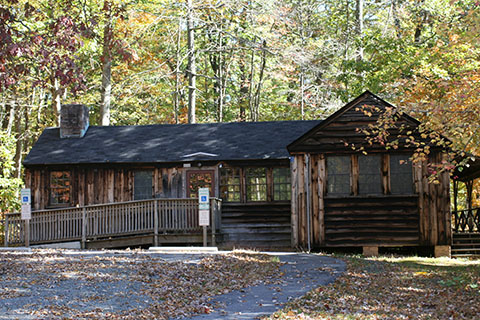
Many French Creek facilities were built by the Civilian Conservation Corps, including two sites on the National Register of Historic Places.
Adjacent to the park lies Hopewell Furnace National Historic Site that features a cold-blast furnace restored to its 1830s appearance. National Park Service costumed interpreters lead tours and demonstrations.
Henry Gun-Making Site
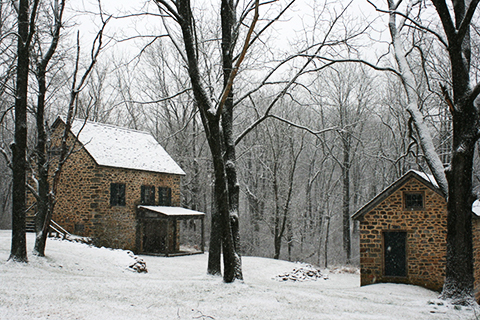
The history of Jacobsburg focuses on the Henry family and their small arms industry -- an industry that played a key role in the American Industrial Revolution.
Henry Rifles were the favored weapon of early explorers of the American West. The Jacobsburg Historic District is in and adjacent to the park and has a Henry Rifle Museum.
Upper Grand Section of the Lehigh Canal
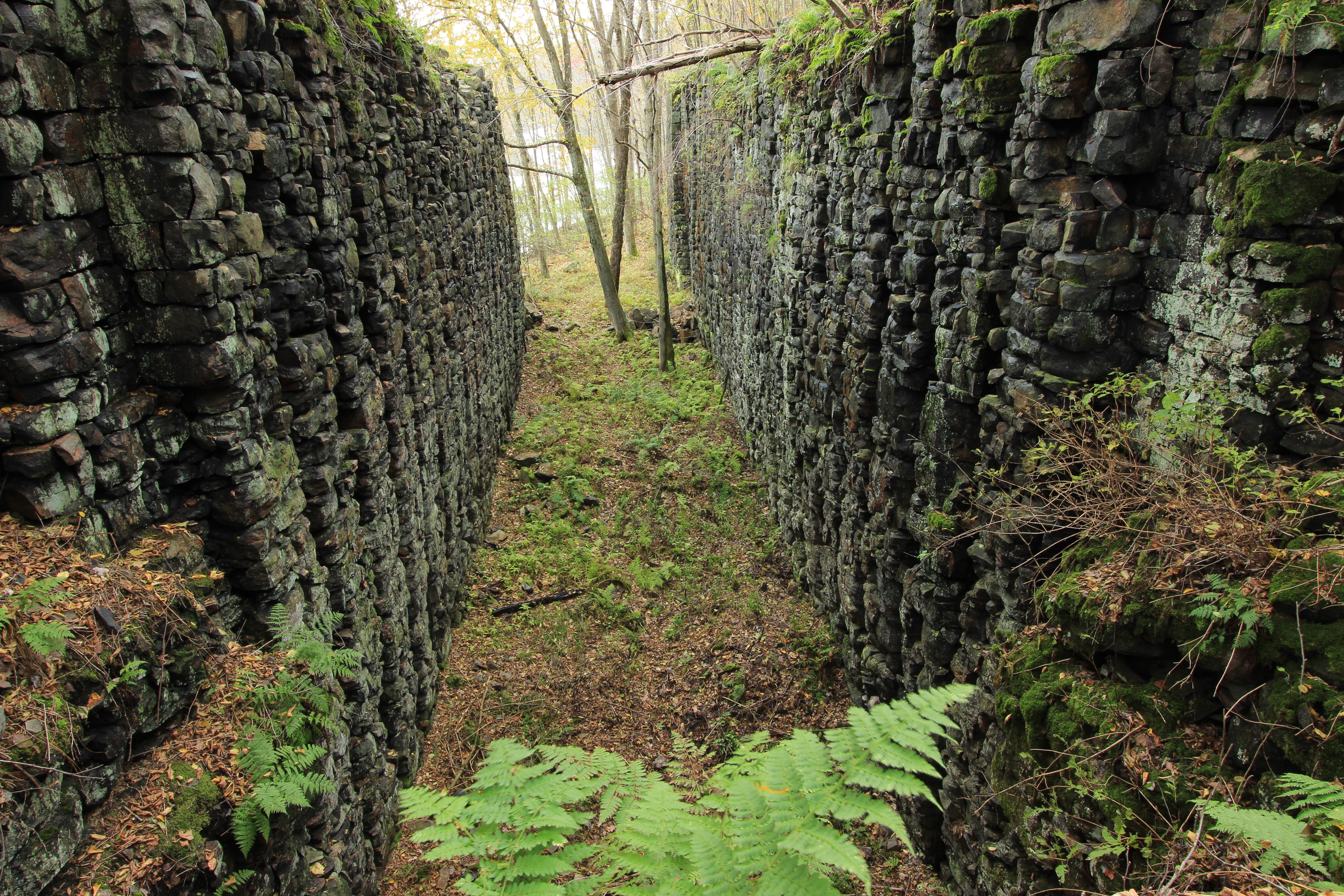
Between 1835 and 1838, a series of 20 dams and 29 locks were built to allow boat commerce between White Haven in the north and Jim Thorpe in the south.
Remains of the Upper Grand Section of the Lehigh Canal can be seen. Waysides interpret the history of the area.
CCC Museum and Buildings
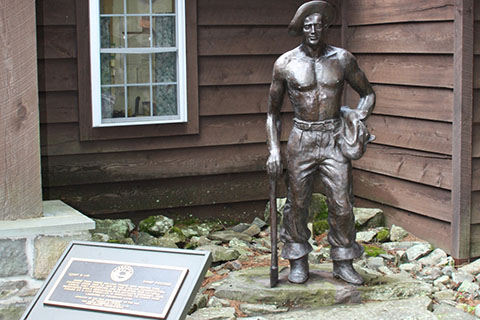
Within the park, you can still see the work of the Civilian Conservation Corps done in the 1930s.
A seasonal museum explores CCC contributions and area wildlife. CCC-era buildings and ruins are scattered throughout the park. The CCC-era Bear Wallows Cabin Area is on the National Register of Historic Places.
Historic Mansion and Buildings
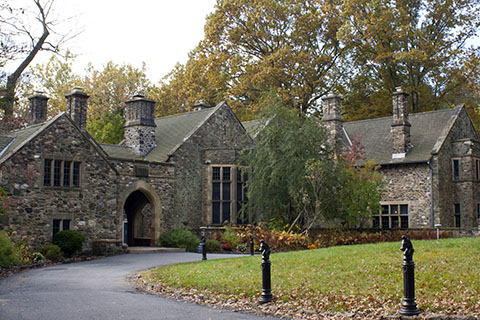
Portions of Ridley Creek State Park are on the National Register of Historic Places. Part of the park is leased to the Colonial Pennsylvania Plantation.
Operated under the direction of Bishop's Mill Historical Institute, the plantation provides visitors with an accurate picture of life on a Delaware County farm prior to the American Revolution.
American Revolution Site and Buildings
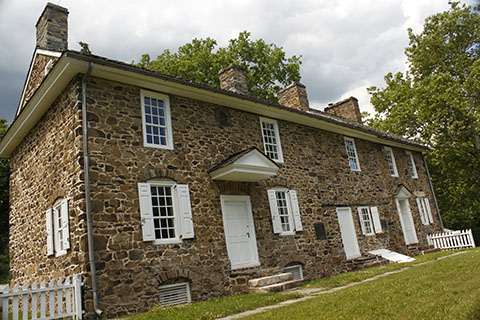
The place where George Washington launched his daring raids into New Jersey. Numerous buildings date from the 1700s. The Thompson-Neely House is on the National Register of Historic Places.
Continental soldiers who died during the encampment were buried in the Soldier’s Graves.
General George Washington Crossing The Delaware Re-enactment
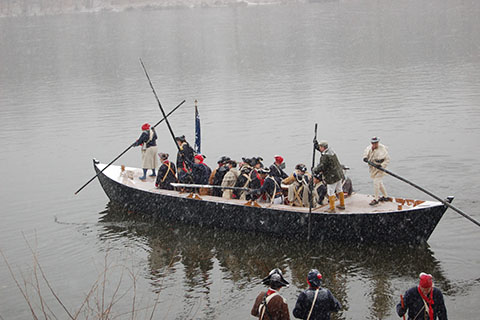
For 64 years, dedicated amateur historians and Revolutionary War re-enactors have been coming to Washington Crossing Historic Park each December to recreate a short boat trip across the Delaware, a trip that forever changed the history of America.
Standing along the shoreline watching what is happening in front of you, you’ll be transported back to Christmas night 1776. During that evening 2,400 Continental Army troops were forming up for embarkation on the very ground that you are standing on.
Various regiments and companies of soldiers straggled in from the north, south, and west. Troops encamped in Newtown, several miles away, made their way down an icy wagon road with their weapons, ammunition, and personal belongings, never knowing if they would return.
In total darkness, they silently boarded the boats and cast off from shore with General Washington and his staff looking on with great determination.
The Christmas re-enactment program; a partnership between the Friends of Washington Crossing Park and DCNR commemorates the courage of Washington’s valiant troops and the sacrifices they made for the freedoms we Americans now enjoy.
Historic Buildings, Arc Corner, and Tri-State Marker
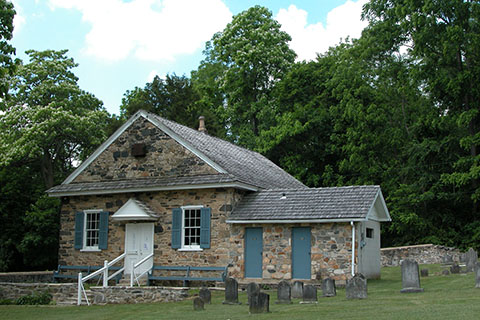
Built in 1729, the London Tract Baptist Meetinghouse is a classic example of a double door Pennsylvania stone farmhouse. The surrounding cemetery has 1700s gravestones and unique gravestones.
Two further points of interest are the tri-state Pennsylvania, Delaware, Maryland and Arc Corner monuments marking historical points along the Mason-Dixon Line.
Western Pennsylvania Historic Places
French and Indian War Encampment
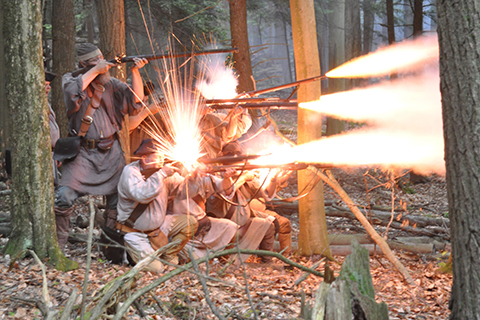
Cook Forest State Park annually hosts a series of living history events depicting life during the French and Indian War.
Highlights of this two-day encampment, sponsored by the
Sawmill Center for the Arts include:
- Woodland natives
- Cannon and musket firing
- Cooking, primitive skills
- 18th century surgical techniques
- Blacksmithing
-
Tinsmithing
-
Pottery
-
Children’s games,
-
Sutler camp
-
Renown living historians
-
French & Indian War Era artisans
-
Live tactical engagements
Take a walk back in time amongst the trees that lived through the world’s actual first world war.
Explore the Black Bear Trail area by the Sawmill Center for the Arts during open camp hours to view British, Colonial, French, and Native American re-enactors as they portray lifestyles of the 18th century.
Old Mill
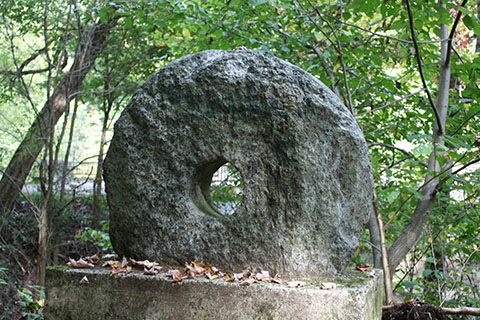
A restored gristmill grinds corn and other grains. There are frequent tours and presentations in the summer season. A covered bridge is on the National Register of Historic Places.
Historic Oil Sites
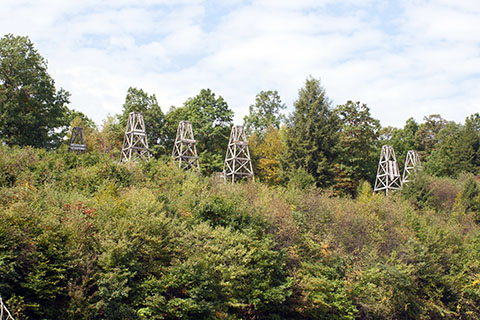
The site of the world's first commercial oil well, Oil Creek State Park tells the story of the early petroleum industry by interpreting oil boom towns, oil wells and early transportation.
Historic Fort Sites
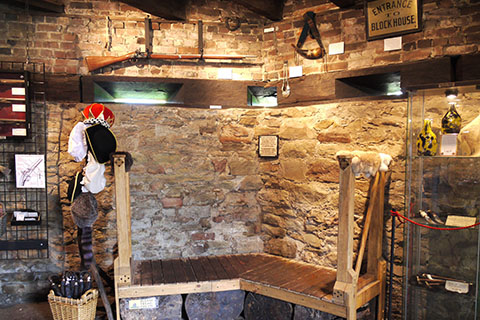
The Allegheny and Monongahela rivers meet at Point State Park to form the Ohio River. During the mid-1700s, the armies of France and Britain were attracted to this area, each vying for control of the Ohio Valley.
Little Bay and the War of 1812
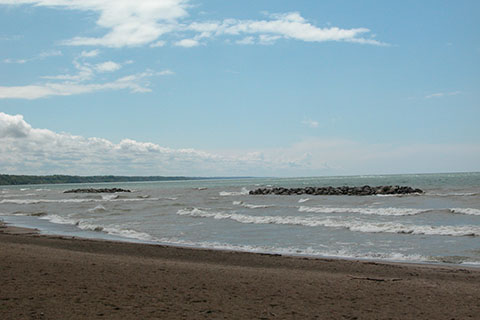
During the War of 1812, Little Bay was the temporary home of the fleet of ships commanded by Commodore Oliver Hazard Perry. Six of his 11 vessels were built in Erie at the mouth of Cascade Creek.
There is a monument to Perry, a historic lighthouse, and a National Register of Historic places pier light.